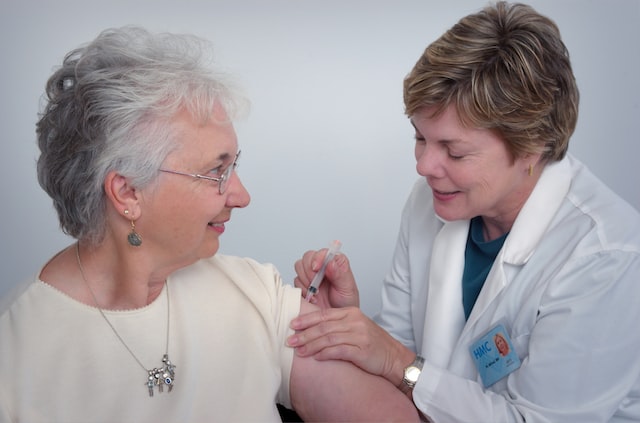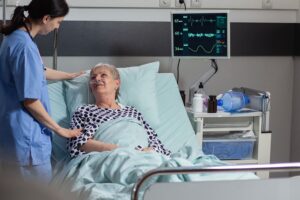
July 25, 2022
Thinking about using a Medical Alert System / Personal Emergency Response System? GLCM Corporate Partner David Michaels shares the basics of Medical Alert Systems to help determine the best system for you or your aging loved one.
What You Need to Know Before Choosing a Medical Alert System
Wilhelm Hormann created the Medical Alert System – also known as personal emergency response systems (PERS) – in the early 1970s as a means of relaying urgent biomedical data and social communication. In 1975, American International Telephone Corporation offered the first medical alert system – a pendant worn by a person who when in distress pushed a button and it called a set of preprogrammed phone numbers. In the 1980’s we all became familiar with the saying “I’ve fallen and can’t get up.”
Medical Alert Systems provide protection when no one is around or close by to lend a hand. Technology has drastically changed and improved the device since its early days now offering a selection of pendants, watches, and even systems that do not require wearing a pendant or wristband.
Medical Alert Systems help individuals maintain quality of life while reassuring their families that they are safe. Two major categories separate Medical Alert Systems: In the home and On the Go. Here are a few of the features and benefits of the two categories of units:
In the Home
- Units are ideal for anyone who is homebound or just needs little extra protection when at home – singles are a great example
- Use either a traditional landline or cellular connections
- Waterproof
- Fall Detection is available
- 24/7 Emergency Help is available
On the Go
- Watches or Pendants
- Wi-Fi and GPS location technology
- Apps for tracking a loved one
- Water Resistant
- Work anywhere in the United States
- Fall Detection is available
- 24/7 Emergency Help is available
GPS and Medical Alert System / PERS
One question often asked is does the Medical Alert System have GPS. Every PERs dealer and manufacturer of the PERs knows where the system is located. Further, depending on the area, the system uses an advanced combination of GPS and WIFI technology to locate the individual.
When a family member or caregiver wants to find the individual, if they are a wanderer for example, then a system with real-time tracking is recommended and utilized.
Monitored vs Non-Monitored Systems
Another great question often asked is why use a monitored system versus a non-monitored system.
- The first reason is simple – monitored systems always answer. When a loved one pushes their PERS button at 3 AM – when most people are sound asleep – the emergency contact most likely will not hear their phone ring. This means mom may lie on the floor in distress for hours until someone wakes up and looks at the phone. A professionally monitored system will always answer.
- The second reason is technology updates. A medical alert received through a dealer will always have the latest technology and provide it to you or your clients free of charge. An example happening now with 3G being terminated. All dealers are upgrading their clients to new 4G units for free. Similarly, if you purchase a self-monitored unit, it will force you to upgrade it, or it will not work by the end of the year.
- The third reason is location. Anyone who has called 911 in an emergency knows they always ask you for your location. Why? Because many 911 centers use old and outdated CAD software (simply no room in the budget for updates). Basically, this means if you need help and can’t respond to 911’s location question, 911 might cant find you. However, response centers used by medical alert companies all use the most up-to-date software and know where the device is and who the person is pushing the button.
The following Redditt post is a powerful example of why a monitored Medical Alert System: “Now, it also depends on the device in question and the infrastructure in the area as to how the call is handled. No voice call from an Apple watch? Very low chance of attendance in any sort of timely manner – just far too many false activations. A no voice call from a dedicated welfare device stating a duress condition or – in the case of eldercare technology – a possible fall – those are attended to in an immediate fashion.”
The main reason people chose a non-monitored or self-monitored system is cost, but for less than $1 a day, one can have all the protection needed with a monitored system.
Therefore, at the end of the day, Medical Alert Systems save lives from a catastrophe once every 11 minutes.
Before purchasing a Medical Alert system, it’s always best to discuss the specifics with your loved ones or Generations LifeCare Manager as they are familiar with many systems and know the expert providers of the systems. Hence, to locate a Generations LifeCare Manager in your area, Contact us. To hire a GLCM Corporate Partner that specializes in Medical Alert Systems, click here.
Disclaimer
This blog is for informational purposes only and does not constitute, nor is it intended to be a substitute for, professional advice, diagnosis, or treatment. Information on this blog does not necessarily reflect the official positions of Generations LifeCare Management and is provided “as is” without warranty. Always consult with a qualified professional with any particular questions you may have regarding your or a family member’s needs.
About Generations LifeCare Management
Discover the best way to age gracefully with Generations LifeCare Management – the leading expert in senior care. Our expert professionals are dedicated to helping you live your best life.
Contact us today to find a Generations LifeCare expert in your area.
Generations LifeCare Management – The Best LifeCare Management in Redding
Redding, CA 96003
United States (US)
Phone: (530)-780-6022
Email: Selina@generationslifecaremanagement.com
URL: https://generationslifecaremanagement.com








